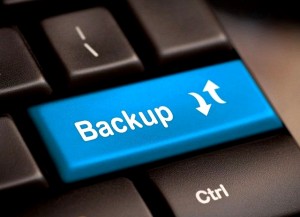Security Data Backup
Backups
Keeping reliable backups is an integral part of data management. Your personal computer, external hard drives, departmental or university servers are examples of tools used for backing up data. CDs or DVDs are not recommended because they fail so frequently.
Backup Your Data
- Make 3 copies (e.g. original + external/local + external/remote)
- Have them geographically distributed (local vs. remote depends on recovery time needed)
Secure Your Data
- Unencrypted is ideal for storing your data because it will make it most easily read by you and others in the future. But if you do need to encrypt your data because its sensitivity:
- Keep passwords and keys on paper (2 copies), and in a PGP (pretty good privacy) encrypted digital file
- Don’t rely on 3rd party encryption alone
- Uncompressed is also ideal for storage, but if you need to do so to conserve space, limit compression to your 3rd backup copy
Test your backup system
In order to make sure that your backup system is working properly, try to retrieve your data files and make sure that you can read them. You should do this upon initial setup of the system and on a regular schedule thereafter.

